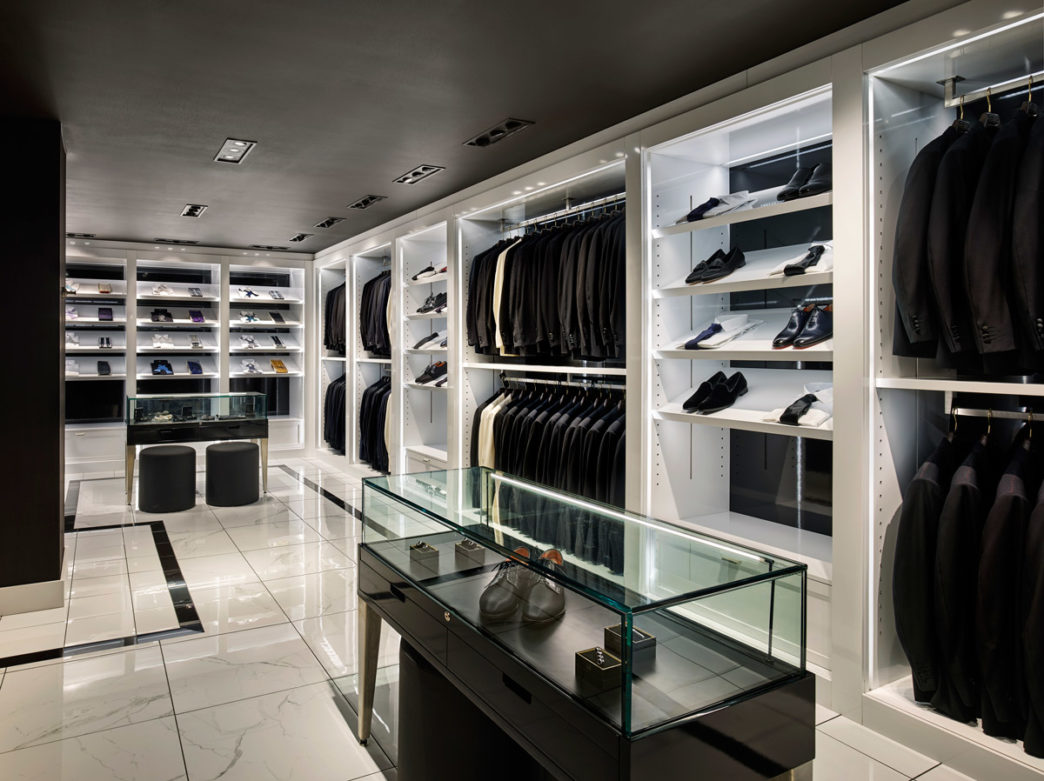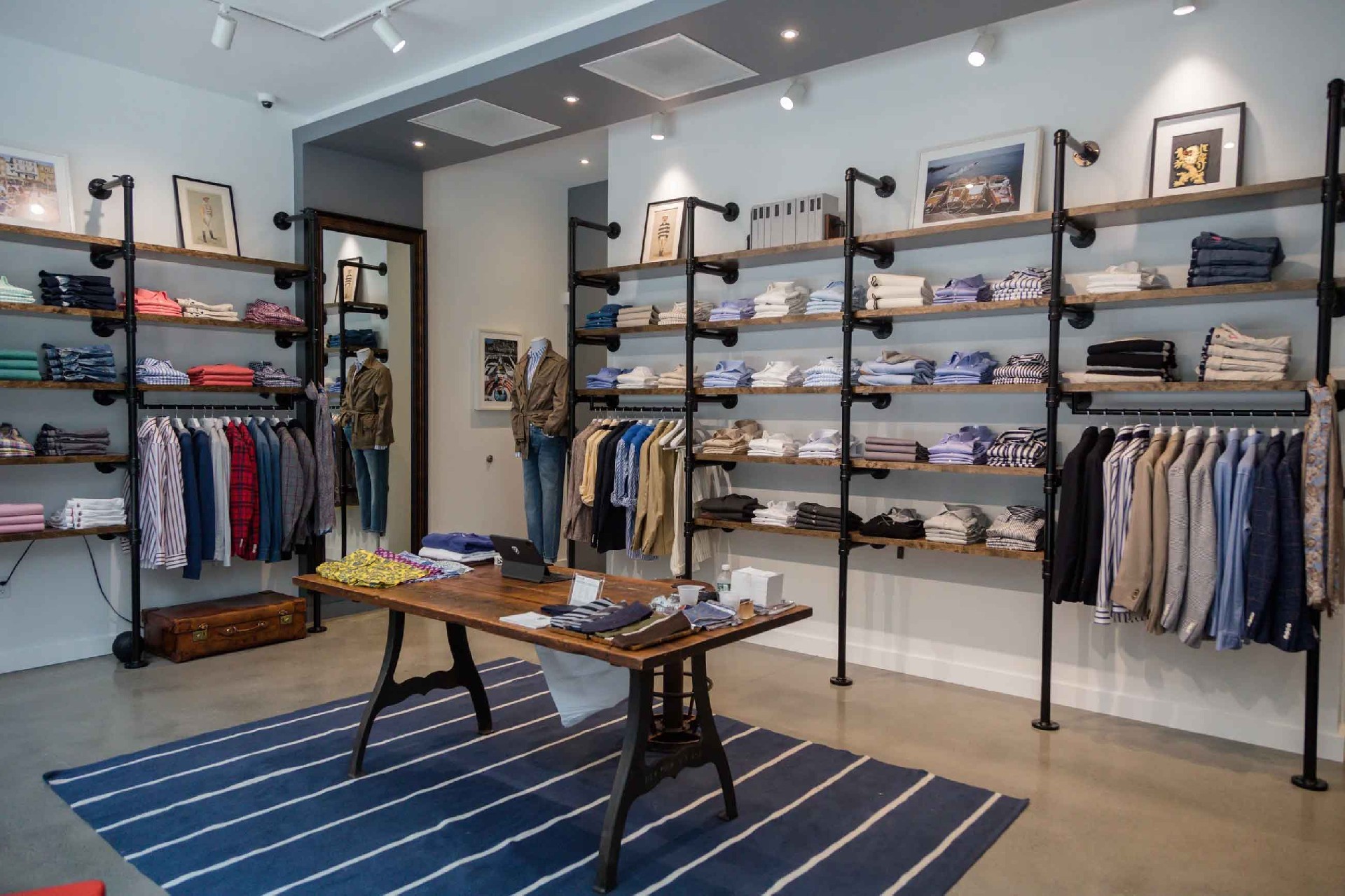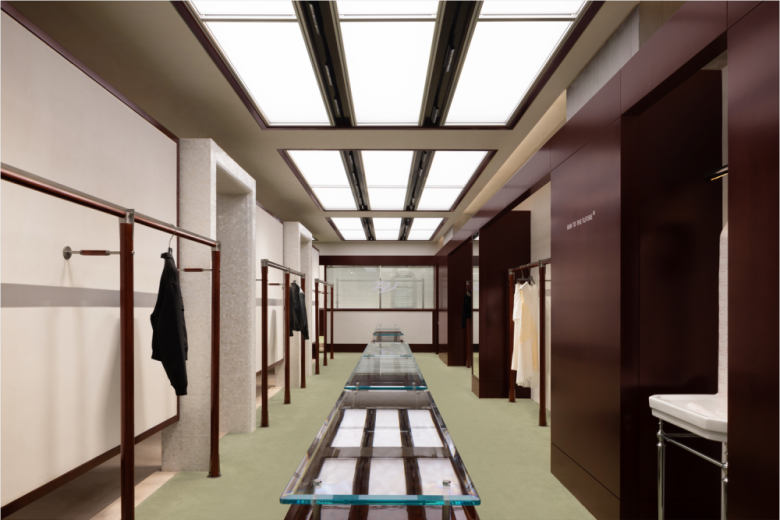In a high-end suit retail environment, display furniture is far more than a vessel for merchandise—it is a crucial medium for conveying brand character and shaping spatial atmosphere. It must fulfill the functional needs of presentation and storage while harmonizing aesthetically with the overall spatial composition. Thoughtfully designed and custom-crafted display furniture subtly elevates the sensory experience, enhances purchase intent, and endows the brand with a distinctive visual language.
First and foremost, display furniture serves the mission of highlighting product characteristics. As a high-value, detail-oriented garment, the suit demands a meticulous approach to presentation. Proper display height, angle, and proportion allow the shoulder line, silhouette, and fabric texture to be captured at first glance. Freestanding racks can showcase a suit’s full form, hanging rails are ideal for presenting coordinated series, while low platforms or drawer displays can neatly organize shirts, ties, and other accessories—creating a cohesive logic of complete ensembles.
From a layout perspective, display furniture works in synergy with circulation flow. Open display racks can draw customers deeper into the store, while semi-enclosed cabinets create intimate zones for focused browsing. Mobile, modular furniture offers exceptional flexibility for seasonal changes, new product launches, or themed events, keeping the space fresh while maintaining brand tone.
Materiality and craftsmanship are the core competitive strengths of high-end display furniture. The combination of solid wood and natural stone can convey both warmth and gravitas; metal edging with refined electroplating balances sheen with modernity. Ultra-clear glass offers transparency that brings out suit details under lighting, while matte metal or leather-wrapped surfaces express a restrained yet palpable sense of luxury. These materials and finishes not only uphold the brand’s visual standards but also immerse customers through tactile and visual engagement.
Aesthetically, display furniture serves as the physical extension of the brand’s narrative. The design language, color palette, and proportional relationships should echo the brand’s heritage and cultural context. A classic menswear brand might favor bold lines and dark woods, evoking the gravitas of a gentleman’s club; a modern brand may lean toward clean geometric forms and metallic finishes to express the efficiency and precision of the urban professional. Such consistency ensures that display furniture becomes not just a merchandise carrier but a symbolic embodiment of brand identity.
Lighting integration is another essential element. Recessed spotlights can precisely illuminate the shoulders and fabric weave of a suit; integrated cabinet lighting can provide even illumination, while reflected light softens the overall ambiance and prevents visual fatigue. With the right interplay of light and shadow, display furniture becomes the stage, and the suit becomes the star of the performance.
Increasingly, display furniture in luxury suit retail is evolving toward multifunctionality. Some custom cabinets incorporate digital screens to play brand films or detailed product videos; drawers may feature built-in motion-activated lighting and fragrance systems to deliver a multisensory surprise upon opening; some designs even include concealed compartments for tailoring tools and fabric swatches, enabling sales staff to assist customers without interrupting their experience.
From an operational standpoint, durability and ease of maintenance must also be considered. High-traffic display racks require stable structures and wear-resistant finishes, while cabinet glass should be fingerprint-resistant and easy to clean. Such details are critical to controlling long-term operational costs and preserving the space’s visual integrity.
In essence, display furniture is both the “skeleton” and the “expression” of a suit retail space. It shapes the structural rhythm of the environment while imbuing it with mood and storytelling. When function and aesthetics are seamlessly integrated, display furniture not only presents the value of the suit with precision but also deepens the emotional bond between customer and brand—transforming each pause and touch into an intimate encounter with the brand’s philosophy.






